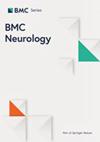2001 年前接受治疗的儿童癌症幸存者的神经系统住院情况:法国儿童癌症幸存者研究队列的发现
IF 2.2
3区 医学
Q3 CLINICAL NEUROLOGY
引用次数: 0
摘要
儿童癌症幸存者(CCS)罹患晚期慢性病的风险增加,这可能受到癌症类型及其治疗方法的影响。这些慢性疾病可能严重致残,通常在治疗后数年至数十年才出现。这些缺陷会对生活质量、智商和记忆力造成负面影响。本研究调查了法国儿童癌症幸存者研究(FCCSS)中癌症类型和治疗方法对神经系统住院治疗的影响程度。我们纳入了5579名儿童癌症幸存者(CCS),他们在1945年至2000年间被诊断患有实体瘤或淋巴瘤,在2001年之前接受过治疗,初次治疗时年龄在21岁以下。随访期为 2006 年至 2018 年。住院数据通过与国民健康数据系统的连接获得。我们计算了相对住院率(RHRs)和绝对超额率(AERs)。我们使用泊松分布的广义线性模型(GLM)进行了多变量分析,以估计神经系统住院与患者特征之间的关联。预期住院次数作为抵消,用于比较 FCCSS 幸存者与参照人群的风险。风险估计值以相对风险 (RR) 的形式报告,并附有 95% 的置信区间。CCS 的住院率为每 10,000 人年 (PY) 114.2 例,而参照人群为 48.4 例。癫痫的住院率最高(AER = 27.1/10000人年,95%CI:23.5-31.2;RHR = 5.1,95%CI:4.4-5.7)。在多变量分析中,中枢神经系统(CNS)肿瘤幸存者的住院相对风险(RR)最高(RR = 9.4,95%CI:6.7-13.1),其次是神经母细胞瘤幸存者(RR = 2.5,95%CI:1.7-3.7)。在所有人群中,与未接受放射治疗的幸存者相比,接受头颈部放射治疗的幸存者住院风险明显更高(RR = 3.9,95%CI:3.3-4.7)。头颈部照射被认为是住院的一个重要风险因素。这强调了针对高危人群实施特定神经监测计划的重要性。本文章由计算机程序翻译,如有差异,请以英文原文为准。
Neurological hospitalisations in childhood cancer survivors treated before 2001: findings from the French Childhood Cancer Survivor Study cohort
Childhood cancer survivors (CCS) have an increased risk of developing late chronic diseases, which can be influenced by the cancer type and its treatment. These chronic diseases can be severe and disabling, typically emerging years to decades after treatment. These deficits negatively impact quality of life, intelligence quotient, and memory. This study investigated how much the cancer type and treatment could affect the neurological hospitalisations in the French Childhood Cancer Survivors Study (FCCSS). We included 5579 childhood cancer survivors (CCS), diagnosed with solid tumours or lymphoma between 1945 and 2000, treated before 2001 and below the age of 21 years at initial treatment. The follow-up period was from 2006 to 2018. Hospitalisation data were obtained by linkage with the National Health Data System. We calculated the relative hospitalisation rate (RHRs) and absolute excess rate (AERs). Multivariable analyses were conducted using a Generalized Linear Model (GLM) with a Poisson distribution to estimate the association between neurological hospitalisation and patient characteristics. The expected number of hospitalisations served as an offset to compare the risk for FCCSS survivors with that of the reference population. Risk estimates were reported as relative risk (RR) with 95% confidence intervals. The hospitalisation rate for CCS was 114.2 per 10,000 person-years (PY), compared to 48.4 in the reference population. The highest hospitalisation rates were observed for epilepsy (AER = 27.1 per 10000 PY, 95%CI: 23.5–31.2 and RHR = 5.1, 95%CI 4.4–5.7). In multivariable analyses, central nervous system (CNS) tumours survivors had the highest relative risk (RR) of hospitalisation (RR = 9.4, 95%CI: 6.7–13.1) followed by neuroblastoma survivors (RR = 2.5, 95%CI: 1.7–3.7). In the whole population, survivors who received radiation to the head and neck had a significantly higher risk of hospitalisation (RR = 3.9, 95%CI: 3.3–4.7) compared to those who did not receive radiotherapy. Head and neck irradiation was identified as a strong risk factor for hospitalisation. This underlines the importance of implementing specific neurologic surveillance programs for at-risk individuals.
求助全文
通过发布文献求助,成功后即可免费获取论文全文。
去求助
来源期刊

BMC Neurology
医学-临床神经学
CiteScore
4.20
自引率
0.00%
发文量
428
审稿时长
3-8 weeks
期刊介绍:
BMC Neurology is an open access, peer-reviewed journal that considers articles on all aspects of the prevention, diagnosis and management of neurological disorders, as well as related molecular genetics, pathophysiology, and epidemiology.
 求助内容:
求助内容: 应助结果提醒方式:
应助结果提醒方式:


